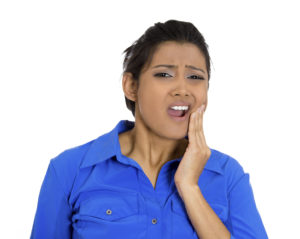 Orofacial pain is a general term covering any pain that is felt in the mouth, jaws and the face. Unfortunately, it is a common symptom and there are many causes. Estimates are that more than 95 percent of cases of orofacial pain result from dental problems. Fortunately, a dentist is often the one you can see to relieve your pain and find a solution to the problem.
Orofacial pain is a general term covering any pain that is felt in the mouth, jaws and the face. Unfortunately, it is a common symptom and there are many causes. Estimates are that more than 95 percent of cases of orofacial pain result from dental problems. Fortunately, a dentist is often the one you can see to relieve your pain and find a solution to the problem.
Gum Disease and Orofacial Pain
Gum disease is more common than you might think. Research shows that some 80 percent of American adults suffer from some degree of gum disease. If not diagnosed and treated, the disease can advance, leading to pain as bacteria destroy gum tissue and teeth begin to decay and even loosen. In the worst cases, teeth may need to be extracted.
Luckily, there is periodontal therapy to stop the advance of gum disease and reverse the damaging effects.
Depending on the degree of damage, your dentist will be able to recommend the best course of treatment. Root scaling and planing is a procedure whereby the bacteria and plaque that are trapped along the gum line are removed and teeth roots are smoothed. More advanced cases may necessitate gum surgery.
Tooth Infection
Another common cause of orofacial pain is pulpitis, which is inflammation of the dental pulp tissue that can result as a secondary infection when you have a cavity. With reversible pulpitis, removing the decayed portion of a tooth and restoring with a tooth-colored filling can treat the infection.
In the case of irreversible pulpitis, a root canal will need to be performed. During this procedure, the dentist removes the tooth’s pulp chamber, disinfects the area, seals the tooth and prepares it for a dental crown. In the most severe cases of pulpitis, the tooth may need to be extracted.
Temporomandibular Joint Dysfunction
One more cause of orofacial pain is temporomandibular joint dysfunction, or TMD. In this case, the joints that allow you to open and close your mouth are impacted. The cause can be arthritis in these joints, an injury, bruxism (teeth grinding and clenching) or infection.
Symptoms of TMD include:
- Pain in your jaw
- A clicking sound when you open and close your mouth
- Feeling as if your jaw is stuck
- Pain in your ear, but no sign of infection
- Headaches and neck pain
In addition to pain relievers and muscle relaxants, your dentist may recommend an oral splint or mouthguard to be worn nightly in order to prevent bruxism.
You don’t have to endure orofacial pain. Contact your dentist today for relief.
Meet the Doctor
Dr. Walt Mick is a family and cosmetic dentist in Reynoldsburg, OH. He and his staff offer a range of general, restorative and cosmetic dental services to help you keep your smile healthy, beautiful and pain free!
